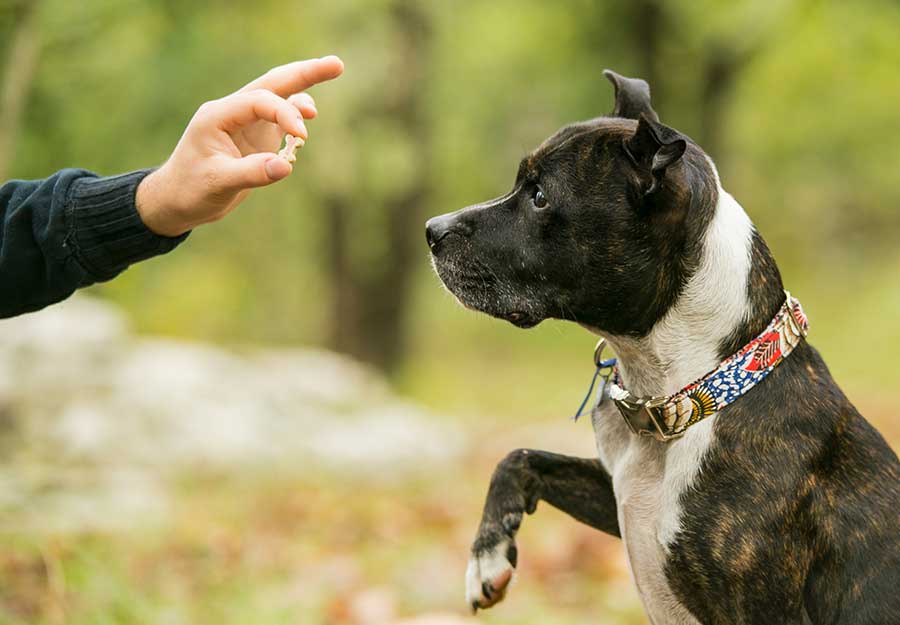Unlock the Tricks of Efficient Dog Training Near Me for a Happier Pet
Unlock the Tricks of Efficient Dog Training Near Me for a Happier Pet
Blog Article
Unlock Your Dog's Potential: Proven Canine Training Techniques for Success
Reliable pet dog training is a nuanced process that pivots on comprehending canine behavior and utilizing scientifically backed approaches. By integrating positive support, establishing clear commands, and focusing on socialization, pet dog owners can grow a productive partnership with their animals.
Recognizing Canine Actions
Comprehending pet habits is essential for efficient training and cultivating a positive partnership between pet dogs and their owners. A detailed grasp of canine body language, articulations, and social interactions is important for recognizing their emotions and requirements. Pets communicate mostly via non-verbal cues; for instance, a wagging tail might indicate enjoyment, while pinned ears can indicate anxiety or entry.

In addition, ecological variables play a significant function in shaping a canine's actions. Adjustments in routine, brand-new environments, or the visibility of unfamiliar people can lead to tension or anxiety in pets. Recognizing these triggers allows owners to alleviate negative reactions and establish appropriate training strategies.
Ultimately, a deep understanding of dog actions lays the structure for successful training approaches, enhancing both actions and the general bond in between the dog and its owner. dog training charlotte nc. This understanding is essential for promoting a well-adjusted, pleased canine companion
Favorable Reinforcement Strategies
Effective training relies greatly on favorable support strategies, which have been shown to produce considerable lead to shaping wanted behaviors in canines. This technique involves awarding a pet for displaying particular actions, therefore enhancing the probability that these habits will certainly be repeated. Benefits can take numerous types, including treats, praise, toys, or play, depending on what motivates the private dog.

It is vital to gradually eliminate rewards as the canine finds out the actions, transitioning to intermittent support. This technique maintains the behavior gradually while stopping reliance on continuous rewards. By concentrating on positive reinforcement, trainers can cultivate a trusting connection with their pet dogs, promoting a healthy and balanced and cooperative training environment that enhances general obedience and efficiency.
Establishing Consistent Commands
A fundamental facet of effective pet training is the establishment of constant commands. Uniformity in commands is vital for efficient communication in between the pet dog and the instructor. When commands are consistent, pets find out to link certain words with preferred behaviors, which accelerates the training procedure and improves understanding.
To develop constant commands, it is vital that all relative use the exact same terms and gestures. If one person uses "sit" while an additional states "rest down," it can produce complication for the canine. Select clear, unique words for commands and guarantee everyone associated with the canine's training abides by these selections.
Furthermore, rep is essential. Reinforce stepping stone animal training commands via regular technique, making sure that the canine receives ample opportunities to respond appropriately. When a pet dog successfully complies with a command, prompt positive reinforcement must adhere to. This could be in the type of deals with, appreciation, or play, solidifying the connection in between the command and the action.
Last but not least, hold your horses. Developing consistent commands takes some time and effort. With commitment and clarity, you will help your pet dog create a strong understanding of assumptions, eventually leading to a mannerly buddy.
Socializing and Exposure
Socializing a pet dog is important for fostering a certain and well-adjusted buddy. This procedure entails exposing your pet dog to a range of environments, individuals, and various other animals to establish their social abilities and adaptability. Early socializing, preferably between the ages of three to fourteen weeks, is crucial, as it lays the foundation for a pet dog's future actions.
During socialization, goal to provide positive experiences in different settings, such as parks, busy roads, and homes with various other pets. Present your pet dog to numerous stimulations, consisting of sounds, sights, and smells, making certain that each experience is rewarding. This direct exposure helps minimize worry and anxiousness, leading the means for a more resilient pet dog.
Engaging in controlled group play sessions with other pet dogs can likewise boost social abilities, showing your pet appropriate interactions and borders. Prioritizing socializing will go right here considerably contribute to your canine's total joy and behavior throughout their life.
Overcoming Common Educating Difficulties

Pets may struggle to focus in unfamiliar or busy settings. Slowly desensitize your canine to interruptions by starting training in a quiet atmosphere and slowly presenting more stimuli as they come to be competent.
In addition, behavior issues like jumping or extreme barking can end up being irritating. Address these by teaching different behaviors, such as sitting smoothly when greeting visitors. Consistency and patience are essential; reinforce wanted habits consistently and prevent scolding, which can lead to confusion.
Lastly, acknowledge that each pet dog is special, and training timelines may differ. Dressmaker your technique to your pet dog's private requirements, and seek professional support if necessary. With perseverance and the ideal methods, getting rid of these challenges can cause a well-trained, pleased canine companion.
Verdict
To conclude, unlocking a canine's possible necessitates an extensive approach that integrates an understanding of canine actions, the application of favorable reinforcement methods, and the establishment of constant commands. Early socializing and direct exposure to diverse settings further boost a pet's versatility and confidence. By attending to common training challenges with tailored approaches and perseverance, teaching your dog to walk on a leash a cooperative and harmonious relationship between pet and handler can be promoted, eventually causing a mannerly friend qualified of growing in different circumstances.
Effective pet training is a nuanced process that hinges on recognizing canine behavior and using medically backed strategies.Comprehending canine actions is important for effective training and cultivating a favorable relationship between dogs and their proprietors.Efficient training depends greatly on favorable support strategies, which have actually been revealed to yield considerable outcomes in forming preferred behaviors in pets. When commands are uniform, canines learn to associate certain words with preferred behaviors, which accelerates the training process and improves understanding.
In conclusion, unlocking a dog's potential demands an extensive approach that integrates an understanding of canine habits, the application of positive reinforcement techniques, and the facility of constant commands.
Report this page